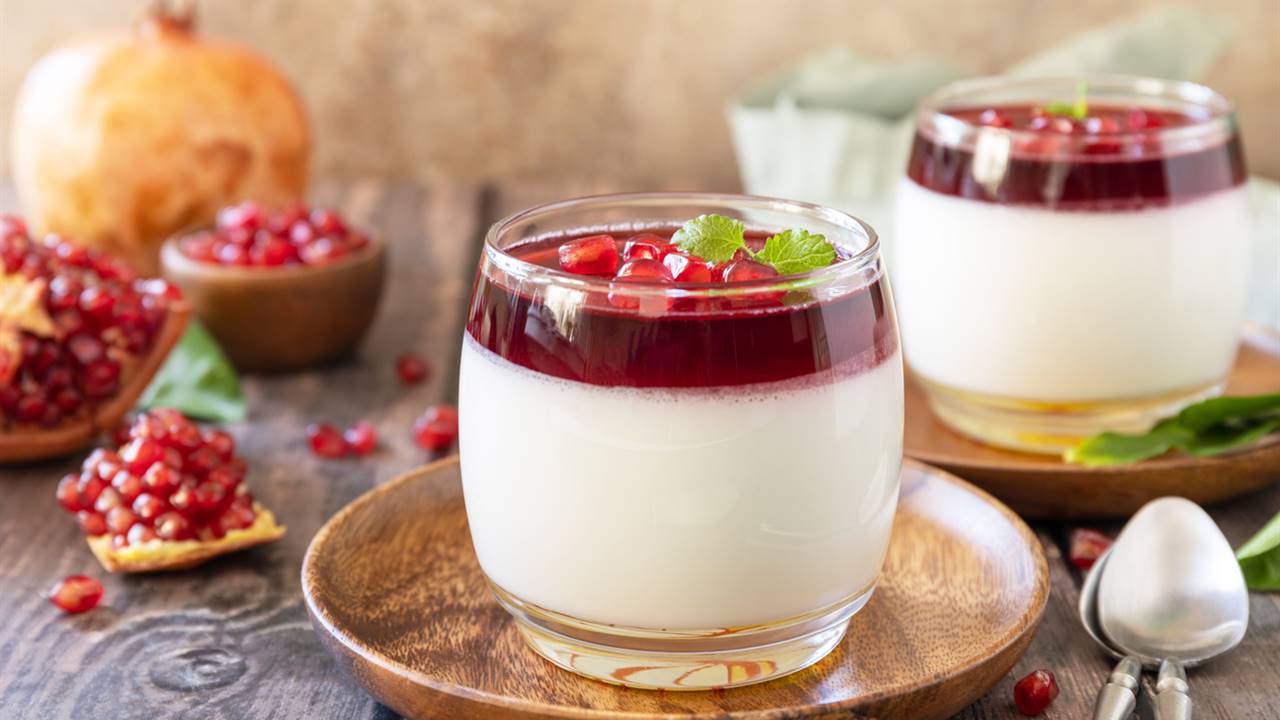Its grains, in addition to being decorative, give a crunchy texture and, depending on their maturity, a sour and sweet taste at the same time, different from any other.

The most common is to take the pomegranate as a fruit, in isolation, or at most garnishing a dessert or ice cream. And so, without a doubt, it is delicious and unique, but our Andalusian past bequeathed us other ways of enjoying it, and today’s creative cuisine also finds new recipes with pomegranate for tasting.
In our gastronomy there are not many salty recipes with fruits. Specifically, when talking about pomegranate, it is usually only found in salad with endive. A simple recipe with pomegranate is prepared by dressing some endive leaves with virgin olive oil, lemon juice and a pinch of sea salt. Then it is seasoned with pomegranate grains. However, you can add it to salads with other bitter ingredients such as arugula, watercress, endives and radicio or purple chicory.
Also, to doughs to fill peppers, eggplants or dumplings, couscous, salty or sweet crepes, and sautéed with fast vegetables, oriental style.
And as for sweets, they accompany mueslis, some cakes and any fruit salad.
With its grains you can also compose simple desserts with suggestive results, combining them with varied cheeses, yogurt, custard, ice cream and sorbets, with nuts or with other related fruits such as dates or figs.
HOW POMEGRANATE IS COOKED IN THE WORLD
In general, pomegranate is heritage of Middle Eastern and Central Asian cuisines.
- In Arab countries they make a kind of marzipan cakes battered in pomegranate grains.
- The Turks prepare a curious cream of rice and almonds, called keskul, which they decorate with pomegranate.
- In Azerbaijan a pomegranate sauce called narsharab is made to flavor meats and in Iran juice concentrate is used – a very popular ingredient there – to prepare dishes such as fesenjan, based on fried nuts, onion and chicken meat, whose recipe we offer you in this article.
- Throughout the Middle East, muhamara is popular, a delicious sauce made with bell peppers, walnuts and pomegranate that is taken accompanied by pita bread.
- In the north and northwest of India the grains of wild pomegranates, which are not eaten as fruit because they are very acidic, are dried to prepare with the dried and ground seeds a condiment called anardana, which is part of many curries and is used almost exclusively in vegetarian recipes.
- But also, in America there are interesting recipes with pomegranate, such as the famous chiles en nogada of Mexico, a very popular dish that reproduces the colors of its flag with the green of the chillies stuffed with pork, the white of the walnut sauce and the red of the grains of the pomegranate.
3 VEGAN RECIPES WITH POMEGRANATE
Take note of these original ways to include pomegranate in your dishes:
1. POMEGRANATE RECIPE: PUMPKIN AND POMEGRANATE SALAD
INGREDIENTS (FOR 4 PEOPLE):
- 100 g orange pumpkin
- 2 endives
- 1 bowl of canons
- 1 large, ripe pomegranate
- 80 g goat curl vegetable cheese
- 8 tablespoons pumpkin seeds
- 6 tablespoons virgin olive oil
- 1 tablespoon grenadine, homemade or commercial
- 1 teaspoon very mild vinegar
- virgin olive oil, for frying
- nutmeg, cinnamon and salt
PREPARATION (15′):
- Chop the pumpkin into small cubes and sauté over high heat with a pinch of salt and a hit of cinnamon and nutmeg. Removed. Shell the grenade. Fry the pipes in abundant oil, remove also and salt.
- Heat the cheese in a clean skillet until it smells toasted. Lift and remove the crisp before it burns. Repeat the operation with the rest of the cheese.
- Puca the endives and distribute on the plates with the canons, pumpkin and pomegranate, with crispy cheese and fried pipes on top. As a dressing mix the oil with grenadine and vinegar.
NUTRITIONAL INFORMATION:
- Calories: 386
- Carbohydrates: 15 g
- Protein: 9 g
- Fat: 32 g
- Cholesterol: 18 mg
2. RECIPE WITH POMEGRANATE: VEGETARIAN FESENJAN WITH POMEGRANATE
INGREDIENTS (FOR 4 PEOPLE):
- 2 packs of seitan
- 2 onions
- 100 g ground walnuts
- 4 tablespoons virgin olive oil
- 250 ml natural pomegranate juice
- 1 lemon, its juice
- 500 ml vegetable broth
- 200 g cooked long grain rice (basmati or jasmine)
- 2 tablespoons brown sugar
- nutmeg
- black pepper
- Saffron branch
- salt
PREPARATION (10′ + 40′ COOKING):
- With your hands, break the seitan packets into small shreds, and fry well in virgin olive oil, until golden brown.
- Chop the two onions and sauté over medium heat. When they begin to brown, lower the heat and add the ground nuts. Sauté for two minutes and add the pomegranate juice, lemon juice, sugar, nutmeg, black pepper, saffron and vegetable broth.
- When the sofrito breaks to a boil, over very low heat so that the nuts do not stick, add the fried seitan and stew for about 20 or 30 minutes, stirring frequently.
- Serve with rice pilaf, that is, fried first in oil for a few minutes and then simmered.
VARIANTS:
As a typical Iranian dish, in its traditional version fesenjan is usually prepared with chicken, but sometimes also with duck.
NUTRITIONAL INFORMATION:
- Calories: 513
- Carbohydrates: 35 g
- Protein: 35 g
- Fat: 26 g
- Cholesterol: 0 mg.
3. RECIPE WITH POMEGRANATE: POMEGRANATE GLASS WITH ORANGE BLOSSOM AND YOGURT ICE CREAM
INGREDIENTS (FOR 4 PEOPLE):
- 800 ml homemade pomegranate juice
- 150 g brown sugar
- 1 lemon, half its juice
- 1 large pomegranate
- 50 g yogurt ice cream
- orange blossom water
- mint for garnish
PREPARATION (10′ + 25′ COOKING):
- Squeeze several grenades with the help of a juicer. As if it were oranges, until you get about 800 ml of juice. Mix it with brown sugar and juice of half a lemon. Cook everything for about 25 minutes, until it thickens a little and is reduced almost by half.
- Let the liquid temper. Once cold, add a few drops of orange blossom water. Shell the pomegranate and serve mixed with the soup, a scoop of ice cream and a mint leaf.
NUTRITIONAL INFORMATION:
- Calories: 320
- Carbohydrates: 70 g
- Protein: 2 g
- Fat: 4 g
- Cholesterol: 0 mg.
HOW TO CHOOSE A POMEGRANATE
Pomegranates should have a healthy appearance, without cuts in the skin or crushed areas. Cracks and wrinkled skin can be signs of late harvesting or poor handling.
Contrary to popular belief, the red zone is precisely the one that has received the least sun and the one that is, therefore, less mature. When the maturation process is really complete, it adopts a brown color.
If the skin has an excessively brown hue or the pimples are very pale it may be due to late frosts or that they have been stored in poor conditions, with very cold.
They should feel heavy for their size.
At room temperature pomegranates are kept for 4 or 5 days, and in the refrigerator for up to three or four weeks, especially if they are protected in paper cartridges.
If you are lucky enough to enjoy them in abundance, either because they are grown in the garden itself or because a good friend does, they can be shelled, stored in bags and frozen.
Although they will lose their texture, they will serve to make delicious juices and jams.








